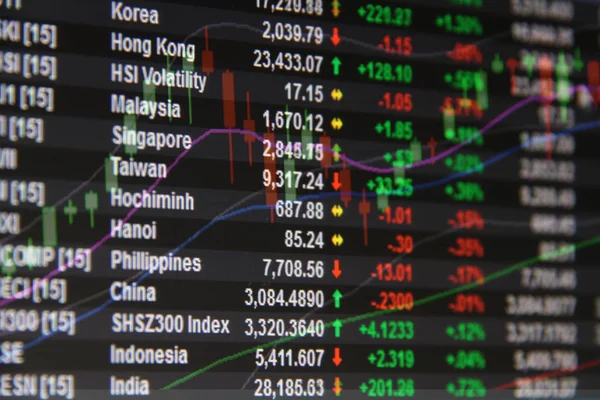Asian equities fall as the bank crisis spreads and spillover and a Fed rate increase is expected. Investors are wary and cautious.
Asian markets and investors brace for Fed rate decision
The majority of Asian markets declined on Wednesday. Financial firms suffered the worst losses as a crisis in U.S. banks spread. Markets also became wary ahead of the end of a Federal Reserve meeting later in the day. Due to market vacations in China and Japan, regional trade volumes were considerably subdued.
Following JPMorgan Chase & Co.’s (NYSE: JPM) emergency takeover of First Republic Bank. Which raised fears of a wider crisis of liquidity in the U.S. banking industry, Asian bank stocks fell in tandem with overnight losses in U.S. banks. As a result, Wall Street indices finished more than 1% down.
Stock Markets Performances in the Asian Session
Prominent oil and gas firms were pressured by a 5% decline in oil prices on Tuesday. Which led to the Hang Seng index having the poorest performance of the day. China Petroleum & Chemical Corp (HK:0386) and PetroChina (HK:0857) both had their Hong Kong shares decline by more than 4%.
Standard Chartered (HK:2888) and HSBC (HK:0005), two venerable banks, each suffered losses of 0.7% and two percent.
The main four Australian banks—Commonwealth Bank of Australia, Westpac Banking Corp. ANZ Group, and National Australia Bank dropped 2%., Causing the ASX 200 in Australia to take the brunt of the financial crisis.
In Singapore trading, Nifty 50 declined 0.5%, signaling a negative opening for Indian bourses due to losses in heavyweight bank equities.
Following Advanced Micro Devices Inc.’s (NASDAQ: AMD) weaker-than-anticipated results – That reaffirmed a slowing global demand for semiconductors, Asian technology stocks also declined. whereas the KOSPI in South Korea dropped 0.8%, and the Taiwan Index dropped 0.4%.
Markets fighting the Fed rate stance and banking turmoil as well
Investors sold risky assets ahead of the end of a Fed meeting later on the day, and Asian markets declined. In an effort to keep lowering inflation. The central bank is generally anticipated to raise interest rates by 25 bp
Markets disagree on whether a developing crisis in finance and worsening economic conditions would be enough for a rate pause.
The Fed’s goal range for U.S. inflation is being exceeded, and the bank hasn’t indicated that it would reduce its aggressive attitude. Given that rising interest rates reduce the attraction of assets that are risky. Any indications of more rate rises by the Fed are bound to cause greater unease in Asian markets.
Asia Fx Session Review
On Wednesday, the majority of Asian currencies slowly recovered from their earlier falls. While the US dollar gave a few gains as markets braced themselves for the Fed’s widely anticipated interest rate rise at the end of the day.
Trading volumes in the area were minimal due to market vacations in China and Japan.
Asia Pacific Forex Markets
However, despite these concerns, the yen increased by 0.4%, rebounding from a nearly couple-month low. However, as a result of dovish indications from the BoJ regarding tightening monetary policy, the prospect for the yen stayed subdued.
The Singapore dollar increased by 0.1%, while the South Korean won gained 0.3% after falling to a five-month bottom in April.
After the Reserve Bank unexpectedly increased interest rates on Tuesday and hinted at further tightening to combat high inflation. the AUD increased by 0.1%, extending gains. The Australian economy has shown a bit of resilience on Wednesday, according to marginally better retail sales statistics. Giving the RBA greater leeway to raise interest rates.
The Thai baht increased 0.1% even as statistics indicated that consumer inflation decreased more than anticipated in April. requiring that the country’s central bank adopt a less aggressive approach.
The yuan has experienced violent fluctuations this week, the offshore yuan hardly moved. But it was nevertheless trading close to a two-month bottom. As data indicated that China’s COVID economic recovery was losing pace.
Dollar index futures and the dollar index both decreased by roughly 0.2 percent.
Markets are divided about if the Fed is going to declare a break in its rate rise cycle. Even though it is largely predicted that interest rates will increase by 25 basis points.
While the Fed may decide to take a break due to a developing crisis in banking and worsening economic trends. Inflation is still significantly higher than the bank’s desired spectrum. Which may lead to additional tightened monetary measures.









